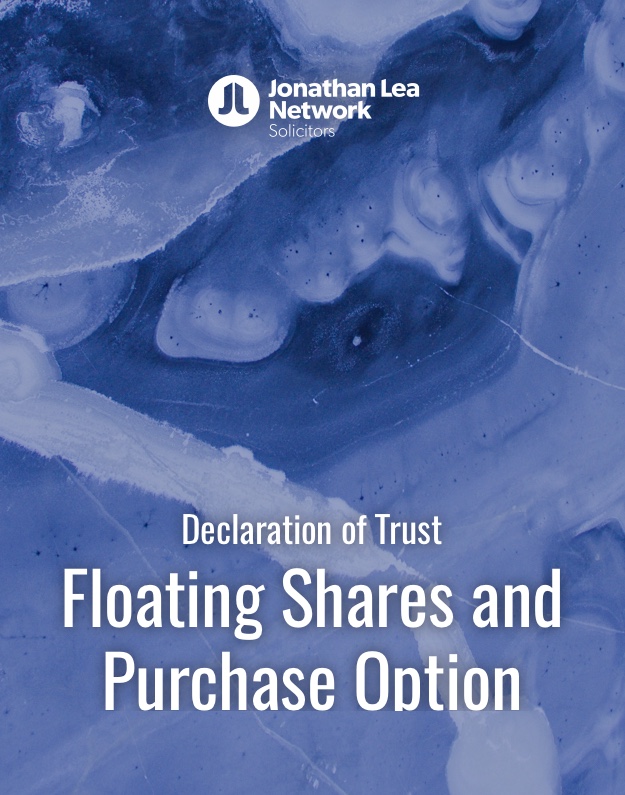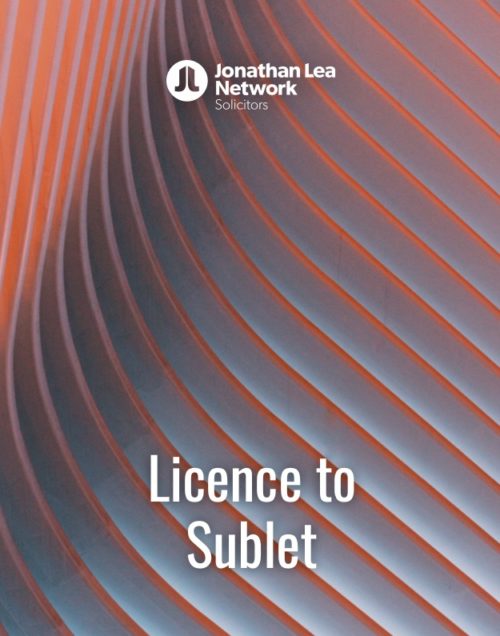Declaration of Trust – Floating Shares and Purchase Option
£12.99
This product constitutes an easily adaptable pro forma declaration of trust, together with a set of tailored guidance notes which aim to set out how to correctly fill-out the template and explain all significant provisions so as to allow you to put into effect a valid and legally binding declaration of trust.
This standard document is drafted for use by two or more individuals who jointly own a property and their respective shares in the property will be determined according to their contributions over time.
Additionally, this document contains provisions which allow a party to purchase another party’s interest in the property via a purchase option. The provisions outline the procedure and time frames for proceeding with the purchase option. Further provisions include how the interest is valued and in turn how the purchase price of the option is calculated.
Generally, declarations of trust or ‘deeds of trust’ are used in property transactions when two or more individuals decide to buy a property together as tenants in common as opposed to joint tenants (i.e. they don’t own the property equally but will have different shares in the property which won’t pass to the other co-owner on death). For further information on declarations of trust, please read our articles below:
- How declarations of trust work
- Declarations of trust for UK property
- How to register a declaration of trust at the HM Land Registry
Further down the page are our guidance notes relating to this template, guidance notes which you will also receive as a separate document when you buy the product.
Explanatory notes
Words highlighted in yellow and/or in square brackets indicate areas which you will need to amend or add information. Once you have inserted all of the information highlighted or in square brackets, we recommend searching the document for “[“ to make sure all square brackets (and the capitalised words within them) have been completed and removed.
This standard document is drafted for use by two or more individuals who jointly own a property and their respective shares in the property will be determined according to their contributions over time. This template contains provisions which allows a party to buy the other’s interest in the property, if notice is served
It can also be used if the owners have held the property as tenants in common since the property was transfer to them but no declaration of their respective beneficial interests has yet been made.
Joint tenants who wish to sever and document their beneficial interests further to the same may also use and adapt this template accordingly.
Parties
This deed is drafted on the basis that there are two individuals jointly owning the property. Please note that in this agreement the First Owner will be the individual who possesses the right to purchase the interest in the property held by the Second Owner.
Background
These statements should take into account the individual circumstances of each transaction and should be amended accordingly.
If the owners hold the property as joint tenants and wish to sever the arrangement, so as to affect the declaration of trust, delete the square brackets so recital (D) is implemented. Tenants in common can delete this entry.
Clause 1 – Interpretation
Clause 1.1 sets out the definitions that will apply throughout the declaration of trust. Clauses 1.2 – 1.9 are standard interpretation clauses that are used in most contracts.
Please note that the sub-definitions under “Expenditure” can be amended or removed to reflect what has/will be spent by the owners in respect of the property.
Clause 2 – Declaration of trust
Clause 2 contains the suggested declaration that the co-owners hold the Property on trust as tenants in common. In addition, there is optional wording that allows for severance of a joint tenancy.
Clause 3 and Clause 4 – Owners’ Shares
The method used to calculate the percentage shares in which each owner holds their beneficial interests is set out in Clause 3 and Clause 4. Please note that the calculation which has been inserted is a suggestion and can be altered to suit the needs for each individual arrangement.
Clause 5 – VAT
This is a standard VAT clause. It is important to include VAT on the relevant amounts otherwise if the owners are unable to claim it back as input tax, VAT will represent an additional cost for the owners.
Clause 6 – Registration/Endorsement
If a declaration of trust is being made after there has been a severance of a joint tenancy, then a form A restriction should be applied for. An application for such a restriction should not be necessary if the owners already hold the property as tenants in common (there should be a restriction on the register already).
If there are limitations which are placed on the co-owners’ powers in the declaration of trust, a form B restriction will also need to be applied for. This will be needed in addition to the new (or existing) form A restriction.
Note that the registration of the abovementioned restrictions applies to registered land. If the property is unregistered, co-owners could confirm their agreement to endorse a memorandum of the declaration of trust on the relevant lease or conveyance. This should encourage a buyer to be aware of the need to pay purchase monies to all trustees.
Clause 7 – Record Keeping
The formula for calculating each owner’s share provided in Clause 3 and Clause 4 is dependent on accurate record keeping. This provides security for both the owners should a dispute arise relating to the expenditure.
Clause 8 – Purchase Option
It is important to ensure that the appropriate party is the First Owner (i.e. the party who can purchase the others interest in the property). The time frames can be amended to reflect the intentions of the owners, though beware, time frames which are too short or too long risk being unfair/unreasonable should a dispute arise.
The option notice information requirements in Clause 8.3 provides the First Owner with the opportunity to suggest an initial valuation of the Second Owner’s interest.
Clause 8.4 will apply where the Second Owner rejects the initial valuation of the First Owner. The time frames can also be revised here and amendments are required to determine who pays the surveyors costs and it what proportions.
Clause 9 – Independent Legal Advice
This is a boilerplate clause, that states that the owners have acknowledged their right to seek independent legal advice.
To be satisfied that a declaration of trust will work for each of the parties to it, and also that it will be binding, we recommend that appropriate legal advice is taken. If possible, each party should take independent legal advice.
Schedule 1
This provides a reference for the calculation of the costs of purchase. Delete any sub-clauses which do not apply.
Execution
This standard document is drafted as a deed and therefore it must be executed as such. This means that the declaration of trust must be signed by each owner and each owner’s signature must be attested by an independent witness and then ‘delivered as a deed’, which simply means indicating that you intend to be bound by the deed. Once the document has been signed by all parties and witnessed, completion has taken place and on the same day of completion, the document must be dated on the cover page and also where indicated at the top of page 1 (where it says ‘This deed is dated …’). The convention is for this date to be inserted in manuscript once you have the whole document executed (and know the completion date, i.e. once you have the last of the witnessed signatures).
Learn more about How to Sign a Deed.
We recommend our clients to certify copies for everyone’s records. This means that each copy is confirmed by a qualified person, usually a solicitor, as a true copy of the original document.









